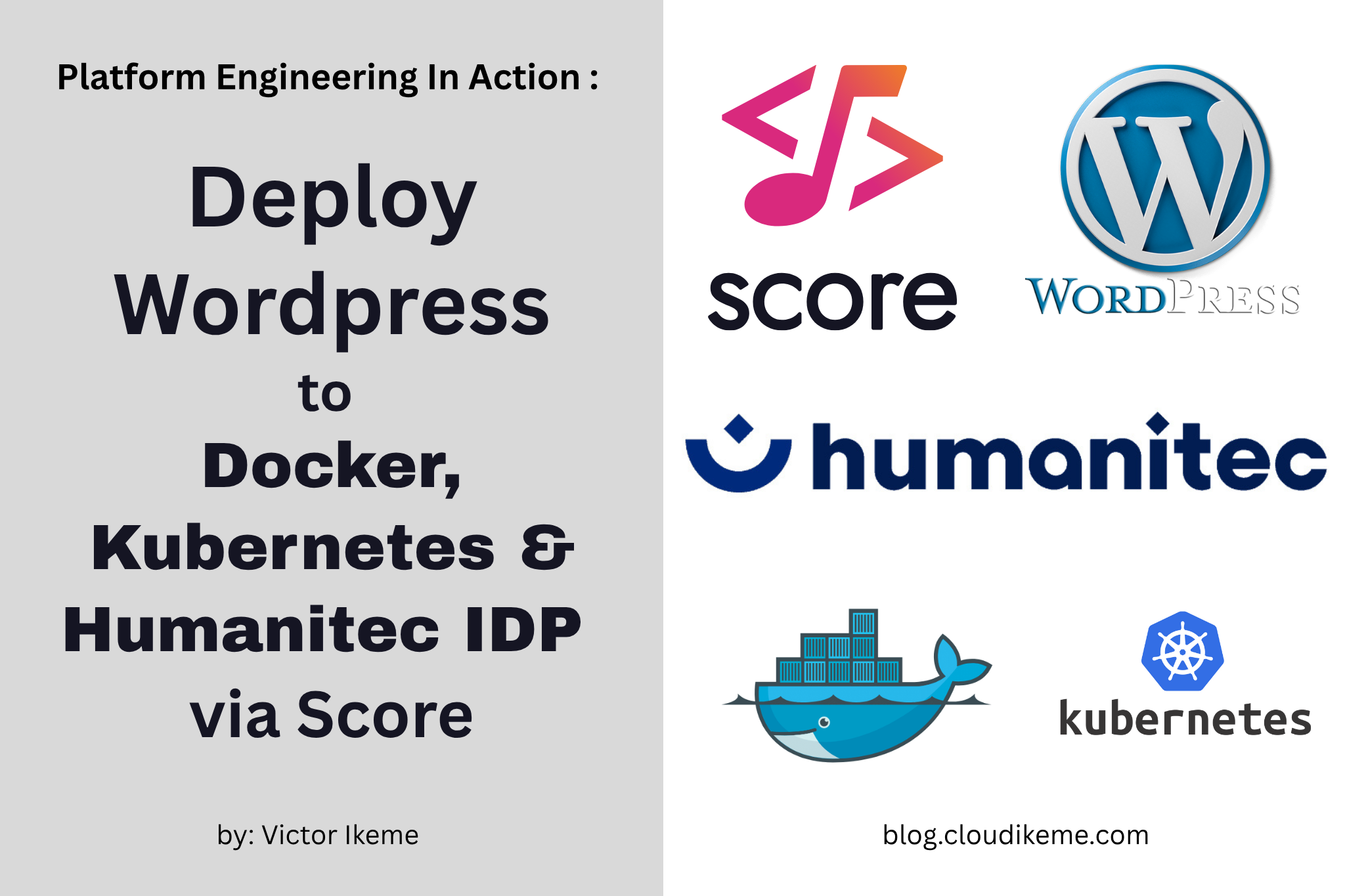Platform Engineering In Action: Deploying a Platform-Ready WordPress Stack with Score to Docker, Kubernetes, and Humanitec-powered IDP.

In platform engineering, the goal is not just deployment — it’s delivery at scale. With a Platform-as-a-Product mindset, engineering teams move beyond infrastructure scripts and start crafting developer experiences.
This Platform Engineering example series brings that idea to life. Over three hands-on tutorials, we transformed the world’s most recognized PHP app — WordPress — into a platform-engineered workload that runs across:
- Docker Compose, powered by
score-compose - Kubernetes, powered by
score-k8s - Humanitec, as a full-fledged Internal Developer Platform (IDP)
More than just a migration, this project reveals how Score enables:
- Clear separation between app intent and infra implementation
- Runtime portability across environments and teams
- Reusable, policy-driven infrastructure with no developer overhead
- Self-service deployment workflows that reduce cognitive load
What You Will Learn
- Why Score provides a clean, cross-runtime workload abstraction
- How to declare resources without writing platform-specific YAML
- How platform teams expose golden paths using resource definitions
- What “self-service” really looks like for application teams
- How this model supports both local-first dev and production-grade ops
Table of Contents
- What You Will Learn
- Table of Contents
- The Problem: Fragile, Environment-Specific Deployments
- The Solution: A Platform Contract with Score
- What the Series Covers
- CTO Notes: Strategic Takeaways from Each Part
- Why This Matters for Senior Engineers and Platform Teams
- Final Thoughts.
- Contribute to the Awesome Score Spec.
The Problem: Fragile, Environment-Specific Deployments
Many teams begin with docker-compose.yaml, Helm charts, or handwritten Kubernetes manifests. These work — until they don’t.
Common friction points:
- App teams define secrets, ports, and storage inside the workload codebase
- Platform teams rewire YAML for each environment
- CI pipelines carry brittle logic
- Infrastructure knowledge is scattered or duplicated
Over time, onboarding slows, environments drift, and handoffs multiply. The root issue? A lack of abstraction between app needs and infra implementation.
The Solution: A Platform Contract with Score
Score solves this problem by defining a developer-focused workload spec — not a deployment engine.
Developers use Score to describe:
- Container images
- Environment variables
- Required resources (like
mysql,dns,route)
Platform engineers then map those resource requests to provisioners or infrastructure definitions — tailored to each runtime.
Example:
- A
mysqlresource maps to a local container in Docker, a StatefulSet in Kubernetes, or an RDS instance via Humanitec - The developer never changes their workload spec
This is the contract. Developers declare intent. The platform fulfills it.
What the Series Covers
This series turns that model into practice by deploying the same score.yaml across three targets — showing how workload portability and platform maturity evolve together.
Part 1: WordPress with Score and Docker Compose
Run WordPress locally with zero docker-compose.yaml. Provision MySQL and dynamic localhost DNS using Score and score-compose.
Platform takeaway: Show developers how to spin up realistic dev environments — fast, safe, and repeatable.
Part 2: WordPress with Score and Kubernetes
Use score-k8s to deploy the same workload spec into Kubernetes — without Helm, kustomize, or YAML handrolls.
Platform takeaway: Codify how services bind, route, and scale in Kubernetes — without burdening application developers.
Part 3: WordPress with Score and Humanitec
Deploy to a full-blown IDP powered by Humanitec. Use resource definitions and classes to provision MySQL dynamically. Expose routes. Inject secrets. All with humctl score deploy.
Platform takeaway: Deliver self-service infra with policy-driven guardrails. No YAML, no kubectl, no ops bottlenecks.
CTO Notes: Strategic Takeaways from Each Part
Each layer of this series adds value — not just to the platform, but to the developer experience.
| Part | Target Runtime | Developer Outcome | Platform Outcome |
|---|---|---|---|
| 1 | Docker Compose | Fast, local-first dev | Clean provisioning for inner loop environments |
| 2 | Kubernetes | Seamless staging rollout | Declarative runtime behavior, reusable patches |
| 3 | Humanitec | Self-service app delivery | Policy-driven infra, zero handoffs |
This is what platform evolution looks like — starting small, scaling smart.
Why This Matters for Senior Engineers and Platform Teams
For senior engineers
This pattern enforces clean boundaries. No more leaking Kubernetes concerns into app code. No more bespoke docker-compose.yaml files. Score becomes the source of truth, while platform logic stays isolated.
For platform teams
It’s the blueprint for building golden paths. Each provisioner or resource definition becomes an internal product — with a defined interface, clear defaults, and environment-aware behavior.
For engineering leadership
This model supports autonomy without chaos. Developers ship faster, while platform teams codify and control infrastructure evolution — at scale.
Final Thoughts.
WordPress was just the starting point. This approach works across:
- Legacy apps being containerized
- New microservices needing repeatable environments
- SaaS platforms rolling out self-service environments
Score defines what the app needs. The platform decides how it’s delivered.
By combining Score with runtime tools like score-compose, score-k8s, and Humanitec, teams achieve:
- Developer autonomy with safety
- Platform consistency without friction
- Infra-as-product patterns that scale
It’s not just about YAML replacement — it’s a new operating model for platform-first organizations.
Contribute to the Awesome Score Spec.
This article series is part of the Awesome Score Spec Examples project.
If you’ve learned something here — or if you want to share how your team runs Score in production:
- ⭐️ Star the repo
- 💡 Open a PR with your example
- 🔄 Reuse this pattern inside your platform
Let’s make platform engineering practical — and portable — for every team.